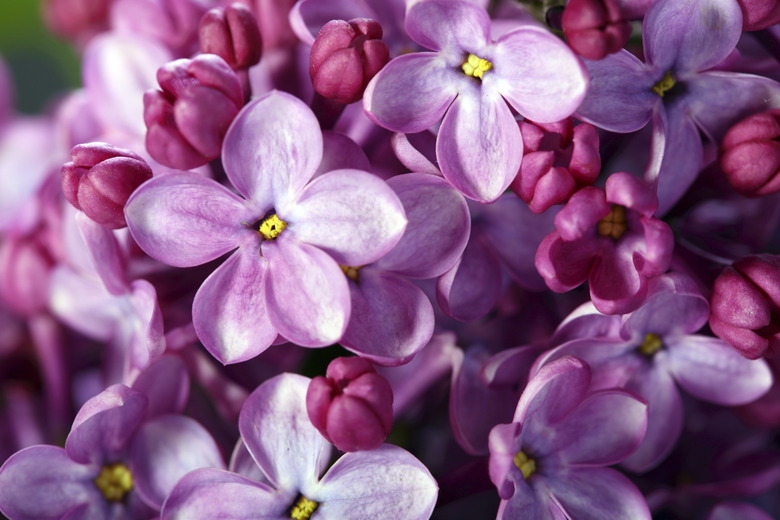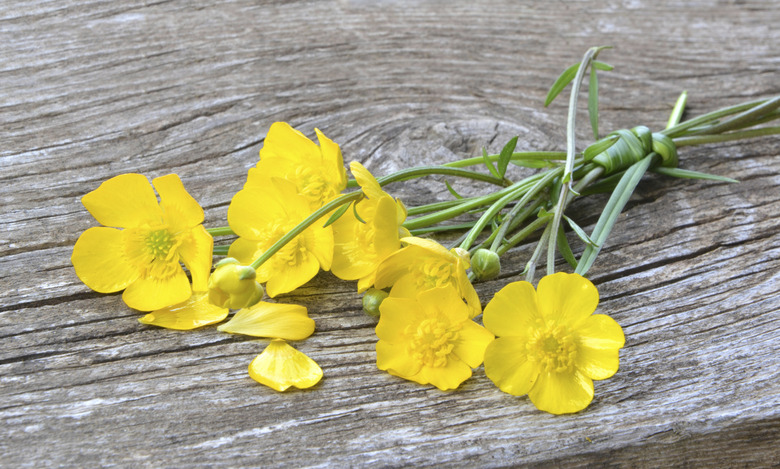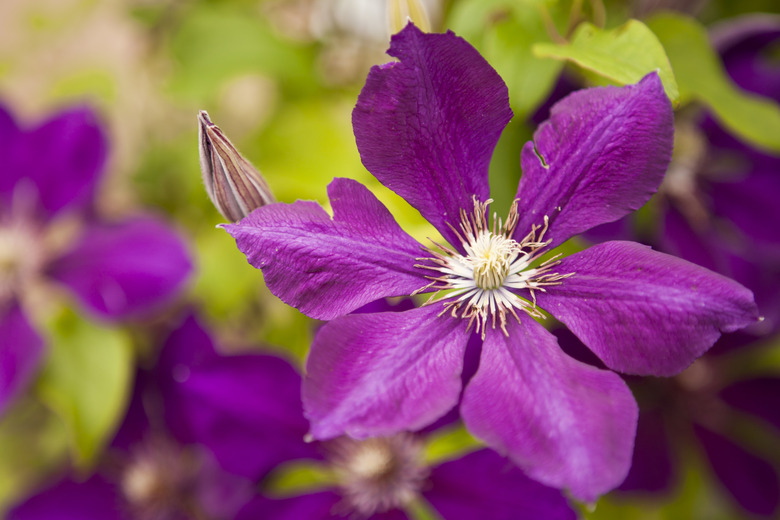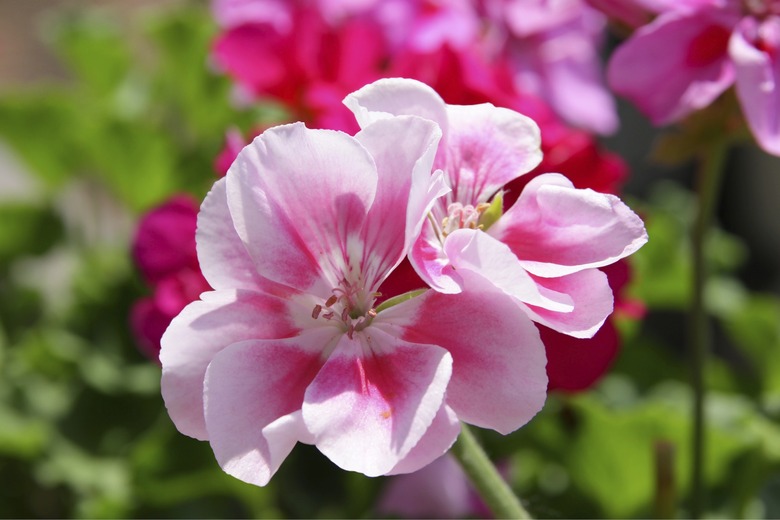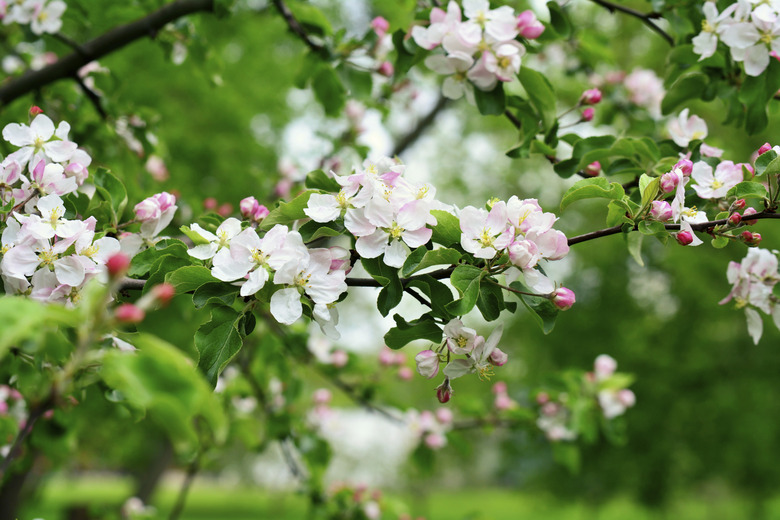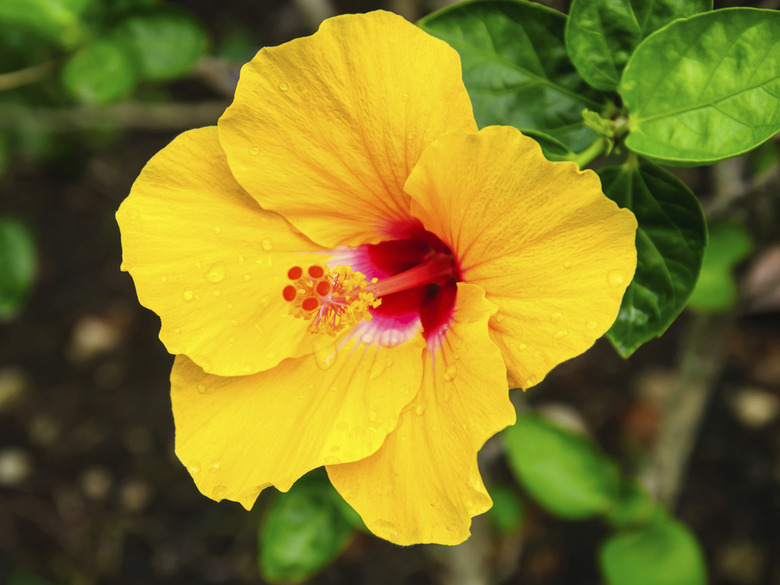What Flowers Have 5 Petals?
Planting a flower garden can involve choosing plants with different flower shapes and size. In general, plants whose seeds contain a single embryo tend to produce flowers with petals in threes or multiples of three. Plants with two embryos often display flowers with petals in groups of four or five. Recurrence of the numbers has stimulated curiosity about synchronicity within the natural world for centuries.
Monocots Vs. Dicots
Flowering plants classified as monocotyledon, or monocots, produce seeds containing a single plant embryo and tend to put forth blooms with three or multiples of three petals. Dicotyledon seeds, or dicots, contain two embryos, and flowers most often have four or five petals. Early Roman naturalists like Pliny the Elder noted the consistent five petals of the rose, and medieval mathematician Fibonacci incorporated observations of flower parts in his theory of cosmic numerical harmony. While numbers of flower petals produced have never provided complete support for either botanical classification or number theory, persistent repetitions have intrigued botanists and gardeners for centuries. Four botanical families, whose plants, shrubs and trees consistently produce five-petaled flowers, illustrate the wide range of blooming choices for any garden.
- Planting a flower garden can involve choosing plants with different flower shapes and size.
- In general, plants whose seeds contain a single embryo tend to produce flowers with petals in threes or multiples of three.
Ranunculaceae
The ranunculus, or buttercup family, contains approximately 50 genera in 1,800 species. Three well-known cultivated members of this family are clematis (Clematis spp., hardy in U.S. Department of Agriculture plant hardiness zones 4 through 11, depending on variety), columbine (Aquilegia spp.) and anemone (Anemone spp.), perennials hardy in USDA zones 3 through 9.
Geraniaceae
Although all genera in the Geranium family carry the word "geranium" in their popular names, one of the most popular cultivated geraniums is not a geranium but rather a related genus (Pelargonium spp.). Often called "zonal geraniums," cultivated pelargoniums are perennial in USDA zones 10 and 11 and grow as vigorous annuals throughout the country till frost. Their wild cousins (Geranium spp.) are perennial, shade-loving woodland natives, varieties of which grow in USDA zones 3 through 10. They share five-petaled flowers and a uniquely shaped fruit that gives pelargonium its name (from Greek pelegros: stork) and nicknames wild geranium "cranesbill."
- The ranunculus, or buttercup family, contains approximately 50 genera in 1,800 species.
- Although all genera in the Geranium family carry the word "geranium" in their popular names, one of the most popular cultivated geraniums is not a geranium but rather a related genus (Pelargonium spp.
- ).
Rosaceae
Hybridized for more abundant petals, wild and traditional members of the rose family (Rosaceae) display the classic five. Varieties of garden roses (Rosa spp.) are welcome in landscapes from USDA zones 4b through 10b. Many of the flowers produced by rose family genera are appreciated twice, once for beauty and then as heralds of fruit harvests to come. Apples (Malus spp.) can be grown in USDA zones 3 through 8, depending on variety. Apples are divided into two types. Hardy varieties grow best in zones 3 through 5, while long-season varieties suit USDA zones 5 through 8. Almonds (Prunus dulcis), hardy in USDA zones 7 through 9, illustrate the breadth of this family of flowers, stone fruits and berries.
- Hybridized for more abundant petals, wild and traditional members of the rose family (Rosaceae) display the classic five.
- Almonds (Prunus dulcis), hardy in USDA zones 7 through 9, illustrate the breadth of this family of flowers, stone fruits and berries.
Malvaceae
Hibiscus varieties dominate the mallow family in bloom size and color. Hibiscus varieties (Hibiscus rosa-sinensis, hardy in USDA zones 9 to 11 or grown as annuals elsewhere) sport flowers up to 6 inches across, in shades of reds and yellows. Rose-of-Sharon (Hibiscus syriacus), hardy in USDA zones 5 through 9, offers 2-inch-diameter flowers in lavenders and pinks on a shrub 6 to 12 feet in height. Ornate and colorful stamens and pistils distinguish this family, evident in the flowers of family members as diverse as the annual vegetable okra (Hibiscus esculentus) and hollyhock (Alcea rosa), which is hardy in USDA zones 3 through 8, as an annual, biennial or short-lived perennial.
References
- University of California Museum of Paleontology: Monocots vs. Dicots: The Two Classes of Flowering Plants
- University of Southern Utah Intermountain Herbarium: Ranunculaceae
- Texas Tech University Department of Plant and Soil Science: Pelargonium x Hortorum
- National Gardening: Anemones
- Google Books: A Vine Devine: Organic Gardening
- Missouri Botanical Garden: Hibiscus Rosa-Sinensis
